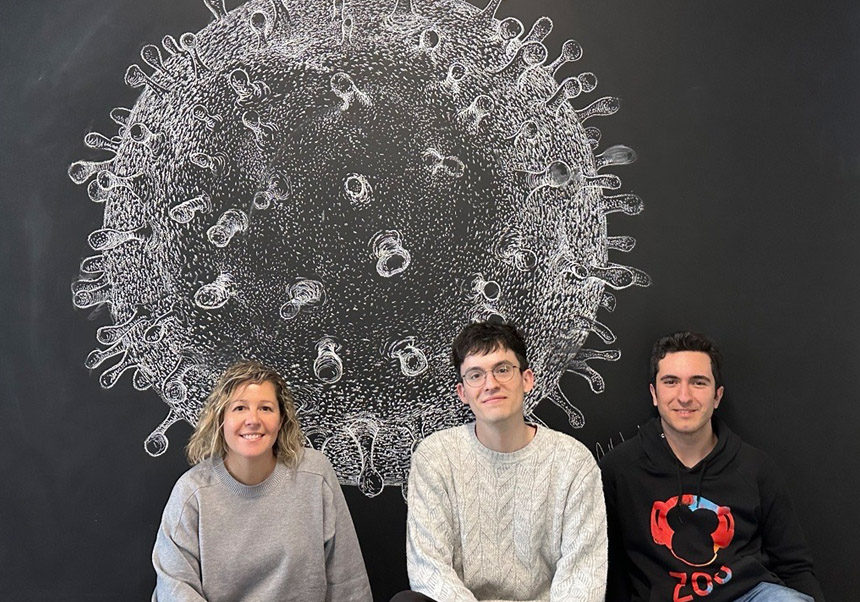
A research team from the Institute of Integrative Systems Biology (I2SysBio, a joint centre of the University of Valencia and the Spanish National Research Council) and other Spanish centres has created software that allows analysing the SARS-CoV-2 evolution within patients who suffer chronic infections from this virus, which can last many months. The tool, VIPERA (Viral Intra-Patient Evolution Reporting and Analysis), has been described in the journal Virus Evolution, and evaluates the evolution of serial samples during infection through the report it generates automatically.
It is an intuitive and scalable tool that facilitates access to the most advanced evolutionary analyses: it allows any professional to track the different populations of the virus within the same patient and study their adaptive changes associated with their transmissibility, pathogenicity or the administration of treatments. The Department of Clinical Microbiology of the Clinical Hospital of Barcelona, the CIBER of Infectious Diseases (CIBERINFEC), the Institute of Biomedicine of Valencia (IBV-CSIC) and the CIBER of Epidemiology and Public Health (CIBERESP) have also participated in the project.
“After validating the software with known data sets, we have successfully applied it to a new case, and we have managed to reveal interesting population dynamics and evidence of adaptive evolution. In the future, we want to apply VIPERA to the study of other organisms that sustainably affect the same patient, such as HIV or bacteria such as Mycobacterium tuberculosis”, explains Mireia Coscollá, researcher at I2SysBio.
The importance of this work lies in the fact that it analyses chronic, more pathogenic or transmissible infections, as a potential source of new variants of SARS-CoV-2 of concern. “With the report generated, you can analyse how the virus evolves throughout the infection”, explains Miguel Álvarez Herrera, I2SysBio researcher and first signatory of the article.
Until now, there was no tool that integrated and standardised the analysis of the intrapatient evolution of SARS-CoV-2. Using VIPERA is simple and generates an easily interpretable report. Additionally, it is open source and scalable. “By applying this tool, we have analysed a chronic infection in depth, revealing the appearance of mutations associated with immune escape and variants of concern”, highlights Jordi Sevilla, co-first signatory of the article.
This work is part of the project CNS2022-135116, which has been funded by the European Union NextGenerationEU/PRTR, the Ministry of Science and Innovation, the Valencian Government, the European Research Council, the Ministry of Industry and Competitiveness, and by FEDER Funds. The computational work was carried out in Garnatxa, the high-performance computing (HPC) cluster of the Institute of Integrative Systems Biology (I2SysBio).
Article reference: https://doi.org/10.1093/ve/veae018











